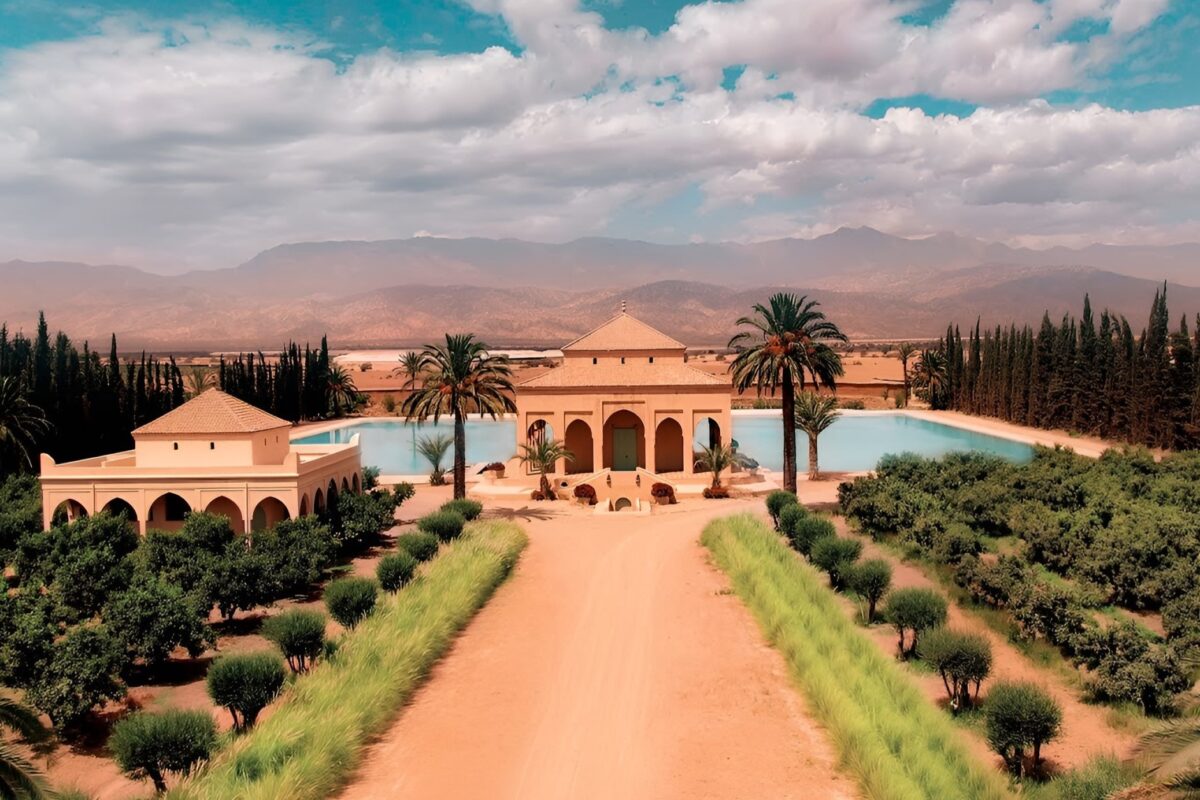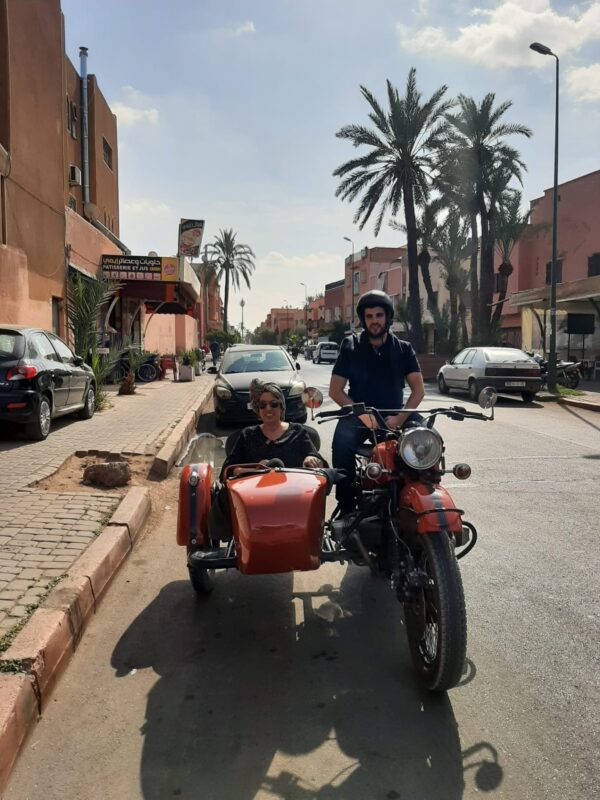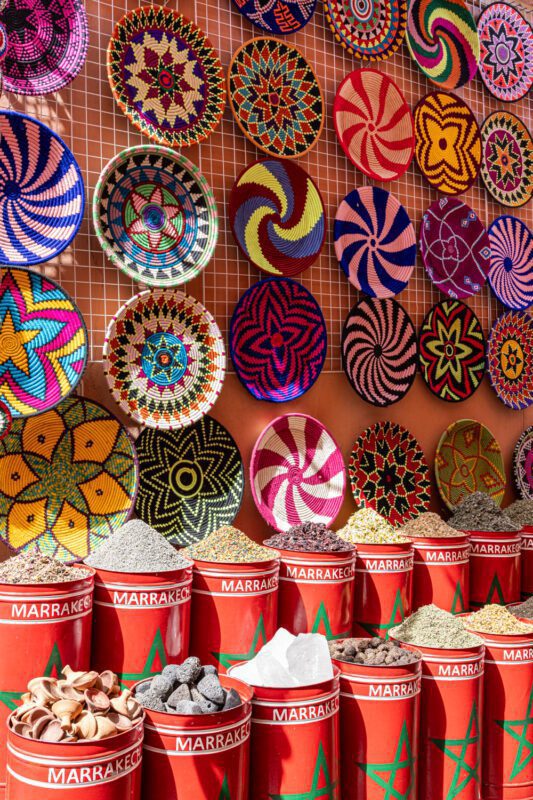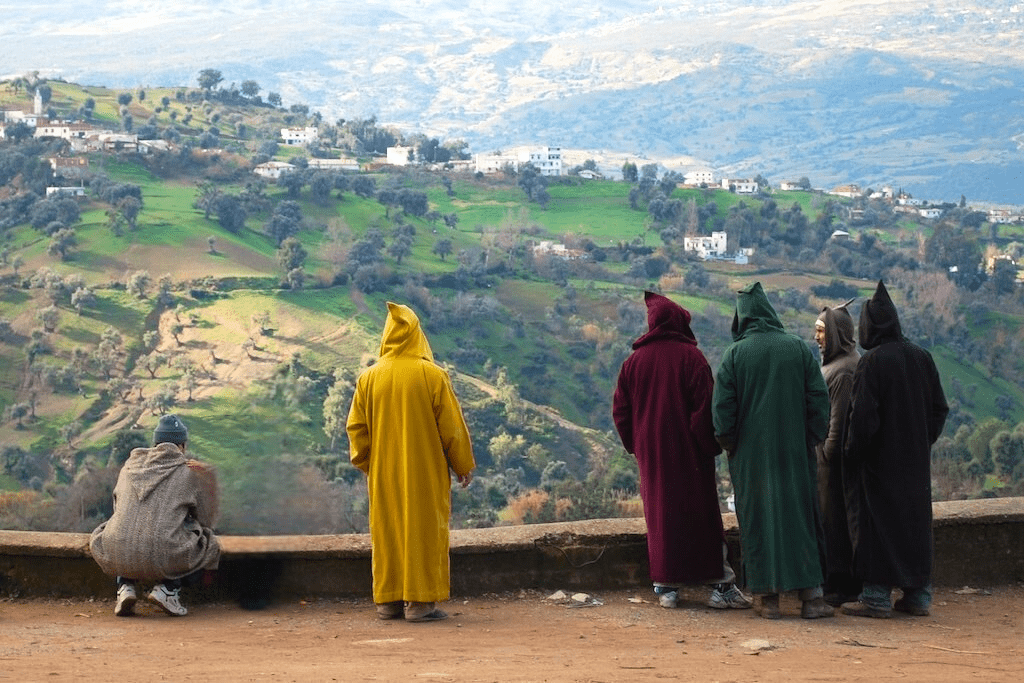This tour is designed for people who want to explore the southern Morocco, the deep desert and its chromatic variations, and who are passionate about travelling and discovering new environments.
We will head off-road through the desert along one of the Paris-Dakar routes, having the opportunity to cross various types of desert until we reach the Atlantic coast, where the fresh air mixes with the dry desert wind. Recommended for those who have a passion for driving as well as for those who want to discover the depths of the desert and its cultural diversity. There are several activities that can be done in the desert, from cooking activities, music, astronomy nights, to 4×4 motorbike riding.
You will also have the opportunity to visit the imperial city of Fes, one of the most impressive in the country, formerly the capital. With an additional guide dedicated solely to the Medina of Fes, you will discover the stories of each corner and learn about the typical crafts of this place.
At the end of the trip, you can choose to stay two more days in Marrakesh and explore the red city accompanied by our guide.
The tour is planned in detail for you, depending on the time you have available for the trip and your preferences. Contact us to let us know the best itinerary for you.
Arrival at Fes airport, where our guide will be waiting for you punctually and properly identified.
*It is also possible to arrive at Casablanca, Rabat or Tangier airports.
Paul Bowles described Fes as an “enchanted labyrinth sheltered from time”. This day is therefore dedicated to visiting this mysterious city. Visit Fes with the support of a guide dedicated solely to this city, so that you can get to know it in depth: its nooks, crannies, traditions, stories and histories.
Fes was once the capital of Morocco, and has Fatimid, Andalusian, Arab, Berber and even Jewish influences.
The Medina of Fes is the most impressive of the historic medinas in North Africa, with its labyrinthine and secret streets, where you will find the most traditional shops and tanneries, where leather is still worked using ancient techniques. Visit the famous “Chouara” leather dye houses.
You will be able to visit the city’s most interesting cultural and historical sites. The city reached its peak in the 13th century, where it became a hub of learning. The Al Quaraouiyine University is the oldest educational institution in the world capable of issuing diplomas, according to UNESCO.
You will also have the opportunity to visit several Coranic schools where you will be able to see some of the best examples of the delicacy of Moroccan decoration.
Middle Atlas
We will leave in the morning to visit the Cedar forests, where you will be dazzled by their spectacular native nature. The environment is calm, clear and rich in the aromas of nature.
On our journey, we will make a brief stop in Midelt, a small town between the High and Middle Atlas, an exceptional location to observe the lush mountainous landscape. During our journey, it is possible to see monkeys and other animals typical of these forests.
Ziz Valley
We arrive at the enormous and fertile Ziz Valley, one of the world’s largest oases, where the dates grown here are unique in the world for their size and flavor.
You will be warmly welcomed here, as only Moroccans can. Being a host is an ancient art with deep cultural roots in Morocco.
There are many activities to do here, such as a Moroccan cooking workshop using local produce, a walk through the palm forest along the river to the old Ksares, taking part in the making of traditional Moroccan carpets, getting henna tattoos and listening to and dancing to traditional Berber music.
In this truly peaceful environment, there is a feeling that time has stopped. The peace of being in this palm grove is like being in the desert, but surrounded by lush and harmonious nature.
Everything you eat here is entirely organic and comes from the palm forest itself, which the Moroccan women transform into a true “festival of flavors”.
Spend the night in a Riad in the middle of this fertile and magical place.
On the way to the Merzouga Desert, you will pass through Erfoud. Nearby, there are fossil excavations where today you can find several fossils of trilobites and other primitive species. This suggests that the soil of the Sahara Desert was once the bottom of an ocean in ancient times. Here you can also enjoy an exhibition of original fossils.
In the afternoon, we will visit Rissani, the former capital of Morocco. Rissani has a famous “souk” where you can buy various handicrafts at local prices, an authentic place that is not too touristy. Take the opportunity to try the authentic Berber pizza, still made using ancestral methods.
In the late afternoon, set off on a camel ride through the Erg Chebbi dunes for about an hour, until you reach the Berber tent where you will spend the night. The colours of the dunes at dusk are a delight for those who enjoy photography.
Dinner will be served there, followed by live traditional music around a bonfire. This music, based on drums and guitars, is captivating and irresistible. Then comes the impressive and magical absolute silence of the desert, inviting you to go inward. The sky is clear and full of stars. It will undoubtedly be an unforgettable experience!
Start the day by heading to the deepest desert, where you will have the opportunity to meet nomadic people and discover the unknown charms of southern Morocco.
During the day, enjoy a variety of activities in the desert, including:
Sports (sandboarding, hiking, yoga), Quad bike rides in the dunes, Moroccan cooking workshops, etc.
Next, we will head to the nomadic people’s depository of Khamlia, a lost village where the original Gnawa people live, first brought from Sudan as slaves. There you will be able to enjoy their music, lifestyle, culture and tradition. Discover life in the middle of the Sahara. You will have the opportunity to meet a local family, have lunch with them and share their customs.
We will follow the off-road tracks. Along the way, you will see small oases and villages, cross the dunes and drive freely across the plains.
We arrive in Ramlia, a remote village in the middle of the desert where you can witness the true Moroccan rural life and meet the local people who live in this oasis.
In the evening, after a delicious dinner, enjoy the night in this magnetic and mystical place.
Zagora
In the morning, we set off for Zagora, passing through the Anti-Atlas and the Berber villages of Agdz and the singing valley of the Draa with its extensive palm groves, considered to be among the largest in Morocco.
For centuries, Zagora was an important stopover for caravans travelling from Marrakech and crossing the Sahara Desert to reach Timbuktu, Mali. This route is known as the Salt Trail. The wealth of many Moroccan sultans derived from these caravans, which transported dates, silver, gold, slaves, crafts and, of course, salt.
Astronomy Workshop
In the evening, an astronomical experience is scheduled, to observe the stars through professional telescopes. This workshop takes place on the rooftop of a hotel with an area of 500m2 that offers a 360º panoramic view and is led by a renowned German astronomer. From a vantage point south of +30° latitude, it is possible to see constellations in the southern hemisphere that are out of reach in central or northern Europe.
For most of the year, the sky is cloudless and completely free of light pollution.
Anti-Atlas
In the morning, we will head towards Taroudant, a city in southern Morocco, nicknamed “Little Marrakesh” or “Grandmother of Marrakesh” because it resembles the smaller Marrakesh, due to its walls and lively Assarag Square. It is known above all for its trade, its walls, the best preserved in Morocco, and its abundance of gardens, which take up more space than the houses.
On the way, we will pass through the Anti-Atlas mountains to Talioulin, the main point on the saffron route. This is also the natural habitat of argan trees, making this area famous for the production of argan oil, known for its therapeutic uses.
We will arrive in Taroudant, an ancient medieval city with a traditional center, which is sometimes invaded by desert sand. The film Ali Baba and the Forty Thieves was filmed in the city’s palm grove in 1954.
In addition to Berber crafts and silverware, the city of Taroudant is famous for its tannery. Around 40 artisans work with the skins of sheep, goats and other animals.
Along the way, we can spend some refreshing moments in the Paradise Valley, located near Agadir, a canyon surrounded by palm trees with small lagoons and waterfalls of crystal clear water, a hidden treasure where you can relax and take a dip.
Taghazout is a popular destination for surfers and yoga practitioners, due to its relaxed atmosphere and its famous waves and paradisiacal beaches. The streets of this village are narrow and colorful, ideal for calmly exploring local life, cafes and small shops.
In the late afternoon, take the opportunity to walk along the seafront and watch the sunset on the horizon.
An artistic city
In the morning, we will head to Essaouira. One of the most charming cities on the Moroccan coast and a multicultural artistic hub that has captivated the likes of Jimi Hendrix, Orson Welles and Bob Marley. With a maritime aroma that constantly permeates the corners of its medina, the city of Essaouira stands out for its urban life, culture and gastronomy, based on fresh fish and the use of argan oil.
Since the time when Carthage was an empire, this coastal area has always been considered one of the best anchorages in the North African Atlantic. The first traces of significant commercial activity date back to the 11th century, but it was in 1506 that the city would see one of the most important pages in its history written, when it was conquered by the Portuguese, who built the fort there that can still be visited today in the city, and named it Mogador.
Its Medina was built in the 18th century and is one of the few in the world that actually had architectural planning. It was at that time that the city was named Essaouira, which literally means “the beautifully designed”. Today, the city is considered a UNESCO World Heritage Site and is the preferred place for most Moroccan artists.
In the evening, enjoy a fresh fish dinner accompanied by live music. There is a wide range of restaurants that host musical groups of different styles every day: blues, jazz, rock, world music, etc.
Enjoy the day in Essaouira and in the middle of the afternoon, we will head towards Marrakesh.
We suggest you end the day with dinner in the fantastic Jamaa el Fna square, where the mix of smells, music and shows are intoxicating, and where tourists and locals mingle and often dine side by side. The entire Moroccan urban culture is represented here and you can find musicians of gnoa or Arabic music, belly dancers, snake charmers and new shows every night.
During the day, be accompanied by a guide dedicated exclusively to the city of Marrakesh, so that you can enjoy the best this city has to offer, explore its history and the atmosphere of fantasy and surprise that Marrakesh always has.
There are several monuments to visit, among which the following stand out:
Koutoubia Mosque: Without a doubt the most famous and most photographed monument in Marrakesh. The Koutoubia Mosque was built in the 12th century and served as a model for the Giralda in Seville and the Hassan Tower in Rabat.
Bahia Palace: This beautiful and extravagant 19th century palace was built to be the best in Marrakesh. This palace has a huge garden, a central courtyard and several rooms incredibly decorated with the work of artisans who came from the city of Fez to work.
Saadian Tombs: These 16th-century tombs were built by Ahmad al-Mansur and contain the remains of around 60 members of the original Saadian Dynasty from the Draa River valley in the south of the country. Interestingly, the tombs were only discovered in 1917. These tombs are one of the most visited monuments in Marrakech.
Palais Dar Bacha, or Musée de Confluences, is a wonderful example of Arab architecture. It has a very special café where you can taste coffees from all over the world in a charming atmosphere.
Transfer to the departure airport in Marrakech.
Have a safe trip back with your memory full of good memories and your heart enchanted by this magical country!
Airport arrival and departure transfers;
Private transportation throughout the trip in a new, safe, air-conditioned 4×4 vehicle. All our vehicles are licensed by the Moroccan government and have insurance for our clients;
Permanent guide who speaks fluent Spanish and Portuguese;
Accommodation throughout the trip, with breakfast;
Dinners in the Ziz Valley, the Merzouga Desert, Ramlia and Zagora;
Additional official guide in the cities of Marrakesh and Fes;
1 night in a Berber camp in a luxury nomad tent;
Camel ride to reach the camp.
● Drinks and other meals (lunches and snacks);
● Entrance fees to monuments and museums;
● Extra activities;
Trip Highlights
- Merzouga Desert;
- Ramlia Oasis;
- Astronomy;
- Essaouira (beach);
- Ziz Valley;
- Imperial cities of Marrakesh and Fes;
Activities of your choice
- Astronomy Night in Zagora;
- Sandboarding (snowboarding on the desert dunes)
- Cooking workshop;
- Hiking in the Ziz Valley;
- Yoga in the desert
- Surfing in Essaouira and Taghazout
- Other activities




